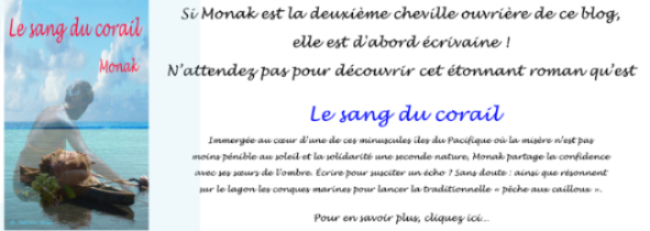
The island again deserted
“Makatea, oblivion”, the film of Jacques Navarro
Rovira, paints a vivid portrait of a dying island, because this last one has
given too much of itself to men.
Ignored by tour operators as
Polynesian authorities, Makatea
Island , in the Tuamotu Archipelago, was nevertheless the first engine of the economic
development of French Polynesia for over five
long decades thanks to phosphate behind its surprising white cliffs.
 |
| In the abandoned coconut grove… |
Thus,
until the early 60s, the exploitation of precious ore has transformed Makatea into a totally out standards place
among all the island small communities of the South Pacific.
Makatea, an exceptional
island
In the height of mining
activity, there were over 3000 inhabitants on the island.
The only train that ever
rolled in French Polynesia was exploited, and for occupy the workers during
their leisure time, the first cinema of the country was established there.
At that time, so more things
happened in Makatea than at Papeete, yet the capital of French Polynesia. The
whole economy of the territory was based on the wealth produced by this small
island of the Tuamotu.
 |
| At the station of Falaise in the “blessed” time of the phosphate |
Things changed abruptly in
1962 when the decision was taken to close the mine. This year, there were still
2,273 permanent residents on the island. Five years later, at the 1967 census,
they were no more than 60 owners and fishermen, living in Makatea.
At the beginning of this 21st
century, the question is: will it still possible to live Makatea in 10 years?
Year 2009,
“Makatea, oblivion”
That’s what the movie tell
us: “Makatea, oblivion”, directed by Jacques Navarro-Rovira and produced by
Bleu Lagon Productions. And it does it superbly well.
 |
| Inga Pan, 100 meters above South Pacific |
This medium-length, made in
2009, was broadcast for the first time on 15 September 2010 by the Polynesian
TV Channel. This is a 52 minutes “docudrama” chronicling the unlikely stay of a
violinist (remarkably played by Inga Pan) on an island with an unlikely destiny.
 |
| In the “vegetation-belly” of Makatea… |
The shock of this encounter
between a Western artist and people abandoned and totally isolated from the
world in a bloodless island is astonishingly rendered by the beautiful images
of Jacques Navarro-Rovira.
The distress and concerns of
this population (French national: must it be remembered?), face a future at
least compromise is perfectly highlighted by the film, as the majestic beauty
and mystery that emerge from the earth bruised of Makatea.
No dialogue in this film: the
traveler violinist expresses herself in voiceover. The inhabitants of the
island, the mayor, the teacher or the grocer, speak by monologue in front of
the camera, or by voiceover when they are on screen, busy chasing monstrous
coconut crabs, for example.
 |
| And in the mineral belly of the phosphate island |
Thus, when images sometimes
breathtakingly beautiful scroll across the screen, marvelously sweet voices scatter
little by little the terrifying report of a slow programmed death.
Makatea,
chronicle of a desertification announced
In November 2009, after the
first session of filming, there were still 49 permanent inhabitants on the
atoll. A year later, they are no more than 39…
During filming, the only
class had eight pupils. During the school year 2010, the teacher takes a class
but only for four children… How long will the government retain a teaching
position for four pupils?
 |
| The remains of the golden age of an island in agony |
There are several projects
to try to revive the moribund economy of the atoll, but none that find approval
of the population. Yet it’s very urgent to act. Indeed, when the central
government will decide it’s no longer justified to maintain the position of
teacher, the remaining young people will leave the island permanently.
Below how many people will the
health department decide to close the small clinic, yet vital to a population
largely composed of retirees?
“Makatea,
oblivion”, the film
With this film of Jacques
Navarro-Rovira, Polynesian documentary experienced a significant breakthrough.
Straying from the beaten
tracks both by the choice of subject as how to treat it, this film shows how
the Polynesian audiovisual production was hitherto conventional and tasteless.
When Jacques Navarro
Rovira talks about his film
From scenario to interpretation
of Inga Pan, through quality shooting quality and the effective bearness of the
directing and editing, there is nothing there to throw. Until music,
anachronistic and unexpected that takes us by the hand to lead us through the
maze of a desertification announced.
And I would like to
specifically acknowledge here, with infinite respect, the extreme modesty with
which the inhabitants of Makatea are expressing their deep concern about what
the future may hold for their island and their small community.
“Makatea, oblivion” was
presented in competition at the FIFO 2011 (International Festival of Oceanian
Film) at Papeete. The audience like the jury was deeply affected.
It can only be hoped that
it’s quickly broadcast on national television stations so that everyone can see
this amazing film like the fate that awaits the people of Makatea.
“Makatea, oblivion” trailer
In conclusion, this small pearl
film proves, if proof was needed, that Polynesia
can offer cinema much more than simple
decorations with fascinating blue lagoons.
To Jacques Navarro-Rovira
and Bleu Lagon Productions, I give my most sincere thanks for allowing me to
publish these few photos of the shoot, signed by the talented Lucien Pesquié.
An article
of Julien Gué
Translated from French by Monak
Copyright
Julien Gué. Ask for the author’s agreement before any reproduction of the
text or the images on Internet or traditional press.


Aucun commentaire :
Enregistrer un commentaire
Cet article vous a fait réagir ? Partagez vos réactions ici :